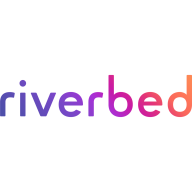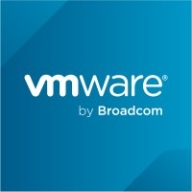

Alluvio Aternity and VMware Aria Operations for Applications compete in the IT monitoring solutions category. VMware Aria Operations for Applications often has the upper hand due to its advanced feature set and perceived value by users.
Features: Alluvio Aternity offers comprehensive end-user experience monitoring, detailed application performance insights, and visibility into end-user activity. VMware Aria Operations for Applications provides advanced analytics, robust integration with VMware environments, and scalable performance monitoring.
Room for Improvement: Alluvio Aternity needs improved integration options, a more modern interface, and enhanced usability. VMware Aria Operations for Applications could benefit from better alerting mechanisms, more straightforward navigation, and improved usability.
Ease of Deployment and Customer Service: Alluvio Aternity is considered easy to deploy but has mixed customer service reviews. VMware Aria Operations for Applications has a more complex deployment process but receives higher marks for customer support.
Pricing and ROI: Alluvio Aternity is seen as cost-effective with good ROI but has higher setup costs. VMware Aria Operations for Applications is more expensive but delivers strong ROI due to its comprehensive features.
| Product | Market Share (%) |
|---|---|
| VMware Aria Operations for Applications | 1.2% |
| Alluvio Aternity | 0.5% |
| Other | 98.3% |
| Company Size | Count |
|---|---|
| Small Business | 1 |
| Midsize Enterprise | 5 |
| Large Enterprise | 32 |
| Company Size | Count |
|---|---|
| Small Business | 4 |
| Midsize Enterprise | 1 |
| Large Enterprise | 10 |
Alluvio Aternity full-spectrum Digital Experience Management provides insight into the business impact of customer and employee digital experience by capturing and storing technical telemetry at scale from employee devices, every type of business application, and your cloud-native application service.
It also helps you resolve issues quickly by showing you response time breakdown between client device, network, and application back ends. Aternity provides AI-powered visibility into the end user experience of every cloud, SaaS, thick client, or enterprise mobile app, whether it runs on a virtual, physical, or mobile device.
Aternity Features
Aternity has many valuable features, including:
Aternity Benefits
Some of the biggest advantages the Aternity offers include:
Reviews from Real Users
Below are some reviews and helpful feedback written by Aternity users.
PeerSpot user Ryan P., Head of Cyber Security Engineering & Oversight at a media company, says, "The most valuable thing that you get from Aternity is very broad visibility. You get visibility of your network, of your endpoints, of your software usage, your application performance, capacity, in one pane of glass. We had 20 to 30 IT tools, including application performance monitoring, network monitoring, security, endpoint detection, network protection, capacity management, service management — every kind of monitoring you can imagine. But Aternity was always the first place that I turned for anything, because you can see everything in it."
An Endpoint Administration Manager at a financial services firm mentions, “It gives you the ability to filter the comparison by geography, industry, or company size.” He also adds, “We have absolutely seen ROI. It's really given us a very high level of visibility that we've just not ever had.”
A Regional Network Manager at a recruiting/HR firm comments, "Aternity provides metrics about actual employee experience of all business-critical apps, rather than just a few. It does some out-of-the-box monitoring for the Office suite, but you can create custom monitoring for any of your applications, whether a web client or a desktop application."
A Sr. IT Manager at a manufacturing company states, "The most valuable feature is the application performance troubleshooting because Aternity is able to provide the performance from the end-user perspective. It doesn't just give the standard application logon time, etc., rather it's also able to measure the performance inside the application, the performance of specific transactions in the application, and break it down into three elements: the client time, the network time, and the server time. This gives us a lot of insights into what we need to focus on to improve the performance of an application."
VMware Tanzu Observability by Wavefront is a powerful tool for monitoring and analyzing the performance and availability of applications and infrastructure in real-time.
With its comprehensive monitoring capabilities, visualizing and analyzing data becomes effortless. The real-time alerting system ensures timely issue resolution, while scalability and a user-friendly interface provide a seamless experience for smooth operations.
We monitor all Application Performance Monitoring (APM) and Observability reviews to prevent fraudulent reviews and keep review quality high. We do not post reviews by company employees or direct competitors. We validate each review for authenticity via cross-reference with LinkedIn, and personal follow-up with the reviewer when necessary.